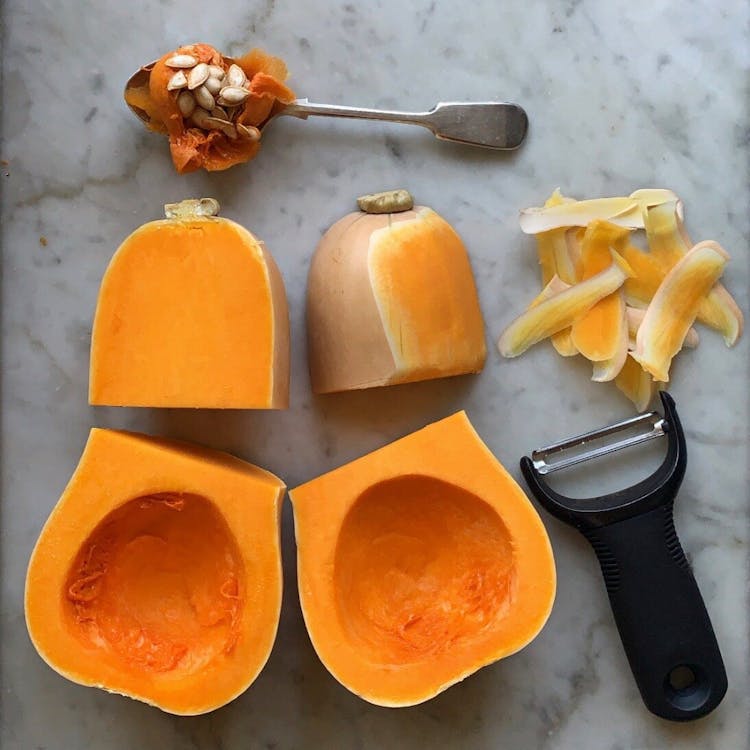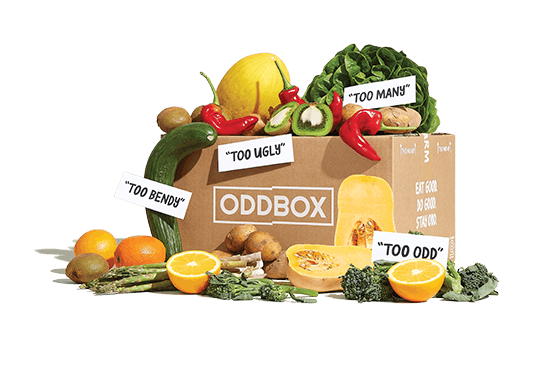How to store, prep, and cook Butternut Squash
The first of the butternut squashes have been rescued, and are just waiting in our boxes for us to use them in a whole myriad of delicious recipes! Trickier than our usual veg to prepare, we thought it’d be best to have our good ODDBOX friend and guest chef Georgia (@georgia_levy_ ) to guide us through the best ways to prepare and cook these beautiful vegetables.
“The elegantly-shaped butternut squash is a staple in many of our diets for the simple reason that it’s a great vehicle for other flavours. Its gentle sweetness and slight nuttiness means that it doesn’t overpower and can carry - and complement - all sorts of assertive spices, fragrant herbs and punchy sauces. And its texture further affirms its versality: its robust flesh means it holds its shape so is perfect for adding to soups and stews, but is also very happy to be mashed so can be used as a filling for ravioli or be made into desserts such as cheesecakes. And both its skin and seeds are edible and delicious meaning the only bit that needs to go into the bin is the stem.” - Georgia

Store them by…
If kept in a cool, dark place, butternut squash can last up two months. Any soft parts can be cut out and discarded and the rest still safely used as long as it’s not discoloured. Once cut, it’ll last a week in the fridge if wrapped.
Prepare them by…
You’ll need a large, heavy knife and a chopping board with a damp cloth underneath to prevent the board slipping – this is how most squash-related injuries occur. Carefully separate the slim part from the round part of the squash, then cut these two bits in half lengthways. Scoop out the seeds and reserve for roasting (see muffin recipe), then sit the four pieces cut-side down on the board to cut into chunks.
If roasting, you don’t need to remove the skin as it will become tender and sweet in the oven. If mashing you may prefer to peel, in which case, you may find it easier to peel whole.
Cook them by…
ROAST:
Leave the skin on and toss chunks with oil, chilli flakes and sage. Place in a 180C oven for 35-40 minutes.
PICKLE:
Finely slice, then pour over a combination of warm white wine vinegar, sugar and spices such as star anise and coriander seeds.
STUFF:
Halve and roast for 30 minutes at 180C before scooping out the flesh, reserving half for another recipe and combining the other half with browned lamb mince, fried onions and garlic, ground coriander and cumin, and flaked almonds. Spoon into squash halves and return to oven for another 20 minutes.
DEEP FRY:
Cut into finger lengths and dip in a batter of flour and sparkling water. Deep fry along with sage leaves until golden. Serve with a wedge of lemon or dip into aioli.
GNOOCHI:
Grate or mash finely and combine 1 part with 2 parts floury potato and a little ‘00’ flour. Roll into sausages, then cut into small pieces. Boil and then serve with sage butter.
SOUP:
Add to a base of onions, celery and garlic with a little chilli and sage. Pour over vegetable stock or water and when tender, whizz until smooth. Add farro or a small pasta shape and serve with chilli oil and Parmesan.
PANCAKES:
Combine with ricotta and a little flour and serve them savoury with roast baby tomatoes and bacon or sweet with maple syrup.

